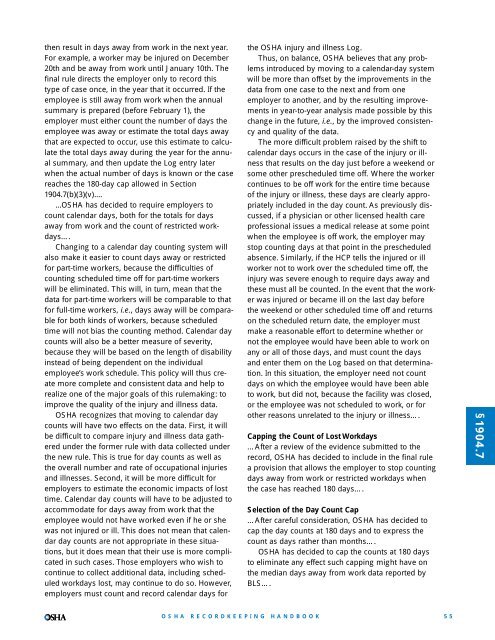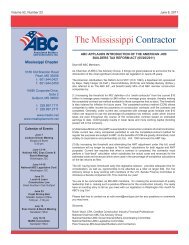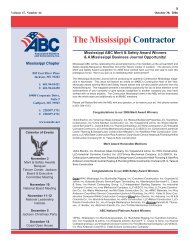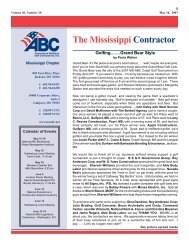§1904.7pose. This paragraph also states that, if the employeeis away from work for an extended time, the employermust update the day count when the actual numberof days away becomes known….Paragraphs 1904.7(b)(3)(i) through (vi) implementthe basic requirements. Paragraph 1904.7(b)(3)(i)states that the employer is not to count the day ofthe injury or illness as a day away, but is to begincounting days away on the following day. Thus, eventhough an injury or illness may result in some loss oftime on the day of the injurious event or exposurebecause, for example, the employee seeks treatmentor is sent home, the case is not considered a daysaway-from-workcase unless the employee does notwork on at least one subsequent day because of theinjury or illness. The employer is to begin countingdays away on the day following the injury or onset ofillness….Paragraphs 1904.7(b)(3)(ii) and (iii) direct employershow to record days-away cases when a physicianor other licensed health care professional (HCP) recommendsthat the injured or ill worker stay at homeor that he or she return to work but the employeechooses not to do so. As these paragraphs makeclear, <strong>OSHA</strong> requires employers to follow the physician’sor HCP’s recommendation when recording thecase. Further, whether the employee works or not isin the control of the employer, not the employee.That is, if an HCP recommends that the employeeremain away from work for one or more days, theemployer is required to record the injury or illness asa case involving days away from work and to keeptrack of the days; the employee’s wishes in this caseare not relevant, since it is the employer who controlsthe conditions of work. Similarly, if the HCP tellsthe employee that he or she can return to work, theemployer is required by the rule to stop counting thedays away from work, even if the employee choosesnot to return to work. <strong>OSHA</strong> is aware that there maybe situations where the employer obtains an opinionfrom a physician or other health care professionaland a subsequent HCP’s opinion differs from the first.(The subsequent opinion could be that of an HCPretained by the employer or the employee.) In thiscase, the employer is the ultimate recordkeepingdecision-maker and must resolve the differences inopinion; he or she may turn to a third HCP for thispurpose, or may make the recordability decision himselfor herself.Paragraph 1904.7(b)(3)(iv) specifies how theemployer is to account for weekends, holidays, andother days during which the employee was unable towork because of a work-related injury or illness duringa period in which the employee was not scheduledto work. The rule requires the employer to countthe number of calendar days the employee wasunable to work because of the work-related injury orillness, regardless of whether or not the employeewould have been scheduled to work on those calendardays….Paragraph 1904.7(b)(3)(v) tells the employer howto count days away for a case where the employee isinjured or becomes ill on the last day of work beforesome scheduled time off, such as on the Fridaybefore the weekend or the day before a scheduledvacation, and returns to work on the next day that heor she was scheduled to work. In this situation, theemployer must decide if the worker would have beenable to work on the days when he or she was not atwork. In other words, the employer is not required tocount as days away any of the days on which theemployee would have been able to work but did notbecause the facility was closed, the employee wasnot scheduled to work, or for other reasons unrelatedto the injury or illness. However, if the employerdetermines that the employee’s injury or illnesswould have kept the employee from being able towork for part or all of time the employee was away,those days must be counted toward the days awaytotal.Paragraph 1904.7(b)(3)(vi) allows the employer tostop counting the days away from work when theinjury or illness has resulted in 180 calendar daysaway from work. When the injury or illness results inan absence of more than 180 days, the employermay enter 180 (or 180+) on the Log….Paragraph 1904.7(b)(3)(vii) specifies that employerswhose employees are away from work becauseof a work-related injury or illness and who thendecide to leave the company’s employ or to retiremust determine whether the employee is leaving orretiring because of the injury or illness and recordthe case accordingly. If the employee’s decision toleave or retire is a result of the injury or illness, thisparagraph requires the employer to estimate andrecord the number of calendar days away or onrestricted work/job transfer the worker would haveexperienced if he or she had remained on theemployer’s payroll. This provision also states that, ifthe employee’s decision was unrelated to the injuryor illness, the employer is not required to continue tocount and record days away or on restricted work/jobtransfer.Paragraph 1904.7(b)(3)(viii) directs employers howto handle a case that carries over from one year tothe next. Some cases occur in one calendar year and54<strong>OSHA</strong> RECORDKEEPINGHANDBOOK
then result in days away from work in the next year.For example, a worker may be injured on December20th and be away from work until January 10th. Thefinal rule directs the employer only to record thistype of case once, in the year that it occurred. If theemployee is still away from work when the annualsummary is prepared (before February 1), theemployer must either count the number of days theemployee was away or estimate the total days awaythat are expected to occur, use this estimate to calculatethe total days away during the year for the annualsummary, and then update the Log entry laterwhen the actual number of days is known or the casereaches the 180-day cap allowed in Section1904.7(b)(3)(v).......<strong>OSHA</strong> has decided to require employers tocount calendar days, both for the totals for daysaway from work and the count of restricted workdays….Changing to a calendar day counting system willalso make it easier to count days away or restrictedfor part-time workers, because the difficulties ofcounting scheduled time off for part-time workerswill be eliminated. This will, in turn, mean that thedata for part-time workers will be comparable to thatfor full-time workers, i.e., days away will be comparablefor both kinds of workers, because scheduledtime will not bias the counting method. Calendar daycounts will also be a better measure of severity,because they will be based on the length of disabilityinstead of being dependent on the individualemployee’s work schedule. This policy will thus createmore complete and consistent data and help torealize one of the major goals of this rulemaking: toimprove the quality of the injury and illness data.<strong>OSHA</strong> recognizes that moving to calendar daycounts will have two effects on the data. First, it willbe difficult to compare injury and illness data gatheredunder the former rule with data collected underthe new rule. This is true for day counts as well asthe overall number and rate of occupational injuriesand illnesses. Second, it will be more difficult foremployers to estimate the economic impacts of losttime. Calendar day counts will have to be adjusted toaccommodate for days away from work that theemployee would not have worked even if he or shewas not injured or ill. This does not mean that calendarday counts are not appropriate in these situations,but it does mean that their use is more complicatedin such cases. Those employers who wish tocontinue to collect additional data, including scheduledworkdays lost, may continue to do so. However,employers must count and record calendar days forthe <strong>OSHA</strong> injury and illness Log.Thus, on balance, <strong>OSHA</strong> believes that any problemsintroduced by moving to a calendar-day systemwill be more than offset by the improvements in thedata from one case to the next and from oneemployer to another, and by the resulting improvementsin year-to-year analysis made possible by thischange in the future, i.e., by the improved consistencyand quality of the data.The more difficult problem raised by the shift tocalendar days occurs in the case of the injury or illnessthat results on the day just before a weekend orsome other prescheduled time off. Where the workercontinues to be off work for the entire time becauseof the injury or illness, these days are clearly appropriatelyincluded in the day count. As previously discussed,if a physician or other licensed health careprofessional issues a medical release at some pointwhen the employee is off work, the employer maystop counting days at that point in the prescheduledabsence. Similarly, if the HCP tells the injured or illworker not to work over the scheduled time off, theinjury was severe enough to require days away andthese must all be counted. In the event that the workerwas injured or became ill on the last day beforethe weekend or other scheduled time off and returnson the scheduled return date, the employer mustmake a reasonable effort to determine whether ornot the employee would have been able to work onany or all of those days, and must count the daysand enter them on the Log based on that determination.In this situation, the employer need not countdays on which the employee would have been ableto work, but did not, because the facility was closed,or the employee was not scheduled to work, or forother reasons unrelated to the injury or illness….Capping the Count of Lost Workdays…After a review of the evidence submitted to therecord, <strong>OSHA</strong> has decided to include in the final rulea provision that allows the employer to stop countingdays away from work or restricted workdays whenthe case has reached 180 days….Selection of the Day Count Cap…After careful consideration, <strong>OSHA</strong> has decided tocap the day counts at 180 days and to express thecount as days rather than months….<strong>OSHA</strong> has decided to cap the counts at 180 daysto eliminate any effect such capping might have onthe median days away from work data reported byBLS….§1904.7<strong>OSHA</strong> RECORDKEEPINGHANDBOOK55
- Page 1 and 2:
www.osha.govOSHARecordkeepingHandbo
- Page 3 and 4:
OSHARecordkeeping HandbookThe Regul
- Page 5 and 6:
ContentsRecordkeeping HandbookRoadm
- Page 7 and 8:
Section 1904.40Providing records to
- Page 9 and 10:
Section 1904.0Purpose(66 FR 6122, J
- Page 11 and 12: Section 1904.1Partial exemption for
- Page 13 and 14: Section 1904.2Partial exemption for
- Page 15 and 16: employees, to OSHA within 8 hours (
- Page 17 and 18: Partial Exemptions for Employers Un
- Page 19 and 20: Section 1904.4Recording criteria(66
- Page 21 and 22: Section 1904.5Determination of work
- Page 23 and 24: (b)(7) How do I decide if a case is
- Page 25 and 26: well, including providing informati
- Page 27 and 28: This exception, which responds to i
- Page 29 and 30: or she is in the work environment a
- Page 31 and 32: have occurred but for the occupatio
- Page 33 and 34: considered work-related. If an empl
- Page 35 and 36: Question 5-12. Is work-related stre
- Page 37 and 38: • The doctor described the illnes
- Page 39 and 40: Scenario 7:• A site hired numerou
- Page 41 and 42: Letter of interpretation related to
- Page 43 and 44: These principles should be applied
- Page 45 and 46: The problem with the response is tw
- Page 47 and 48: Section 1904.6Determination of new
- Page 49 and 50: the Guidelines stated that “the a
- Page 51 and 52: estricted work. If the case is a pr
- Page 53 and 54: • The doctor also prescribed the
- Page 55 and 56: • The employees were under the di
- Page 57 and 58: Section 1904.7General recording cri
- Page 59 and 60: (iii) Do I have to record restricte
- Page 61: of the length of time the employee
- Page 65 and 66: A partial day of work is recorded a
- Page 67 and 68: In all other respects, the final ru
- Page 69 and 70: ments. The Agency believes that the
- Page 71 and 72: e recorded because it will require
- Page 73 and 74: However, episodes of fainting from
- Page 75 and 76: care professional, he or she may al
- Page 77 and 78: “Other simple means” of removin
- Page 79 and 80: For purposes of OSHA recordkeeping
- Page 81 and 82: • When answering the doctor’s q
- Page 83 and 84: Response: In the recordkeeping regu
- Page 85 and 86: Letter of interpretation related to
- Page 87 and 88: Section 1904.8Recording criteria fo
- Page 89 and 90: caused by contaminated needles and
- Page 91 and 92: Section 1904.9Recording criteria fo
- Page 93 and 94: Section 1904.10Recording criteria f
- Page 95 and 96: hearing loss case that is not relat
- Page 97 and 98: average of 10 decibels or more at 2
- Page 99 and 100: argued that because the function of
- Page 101 and 102: occurs, and where hearing loss can
- Page 103 and 104: cases in their workplace via analys
- Page 105 and 106: March 4, 2004Mr. Carl O. Sall, CIHD
- Page 107 and 108: When the professional evaluating th
- Page 109 and 110: (2) May I line-out or erase a recor
- Page 111 and 112: Section 1904.12Recording criteria f
- Page 113 and 114:
These new statistics would add only
- Page 115 and 116:
Sections 1904.13 - 1904.28 Reserved
- Page 117 and 118:
two lines of the OSHA 300 Log to de
- Page 119 and 120:
which replace the OSHA 200 and 101
- Page 121 and 122:
different types of occupational ill
- Page 123 and 124:
OSHA 301 form. These data are usefu
- Page 125 and 126:
LETTERS OF INTERPRETATION: Section
- Page 127 and 128:
Question 2: Under 29 CFR Section 19
- Page 129 and 130:
and has adopted language in the fin
- Page 131 and 132:
Section 1904.31Covered employees(66
- Page 133 and 134:
label assigned to a worker is immat
- Page 135 and 136:
These workers should be evaluated j
- Page 137 and 138:
Response: A case is work-related if
- Page 139 and 140:
Response: Section 1904.31 states th
- Page 141 and 142:
Thank you for your interest in occu
- Page 143 and 144:
year covered by the summary. The su
- Page 145 and 146:
2. Number of employees and hours wo
- Page 147 and 148:
LETTERS OF INTERPRETATION: Section
- Page 149 and 150:
Section 1904.33Retention and updati
- Page 151 and 152:
June 23, 2003Mr. Edwin G. Foulke, J
- Page 153 and 154:
Section 1904.34Change in business o
- Page 155 and 156:
PREAMBLE DISCUSSION: Section 1904.3
- Page 157 and 158:
Incident Report (Forms 300 and 301,
- Page 159 and 160:
workers’ compensation claim. See
- Page 161 and 162:
LETTERS OF INTERPRETATION: Section
- Page 163 and 164:
Letter of interpretation related to
- Page 165 and 166:
Question 3: Using the facts in Ques
- Page 167 and 168:
Section 1904.37State recordkeeping
- Page 169 and 170:
tion, require employers to report f
- Page 171 and 172:
(5) If I receive a variance, may th
- Page 173 and 174:
Section 1904.39Reporting fatalities
- Page 175 and 176:
gation. Therefore, the final rule d
- Page 177 and 178:
Section 1904.40Providing records to
- Page 179 and 180:
ness. The government inspector may
- Page 181 and 182:
Response: The controlling employer
- Page 183 and 184:
FREQUENTLY ASKED QUESTIONS: Section
- Page 185 and 186:
OSHA and the BLS have worked togeth
- Page 187 and 188:
provide copies of the retained reco
- Page 189 and 190:
FREQUENTLY ASKED QUESTIONS: Section
- Page 191 and 192:
Section 1904.46Definitions(66 FR 61
- Page 193 and 194:
of business information. For exampl
- Page 195 and 196:
inconvenience associated with keepi
- Page 197 and 198:
skin disease, respiratory disorder,
- Page 199 and 200:
Question 2: Under 29 CFR Section 19
- Page 201:
www.osha.gov







